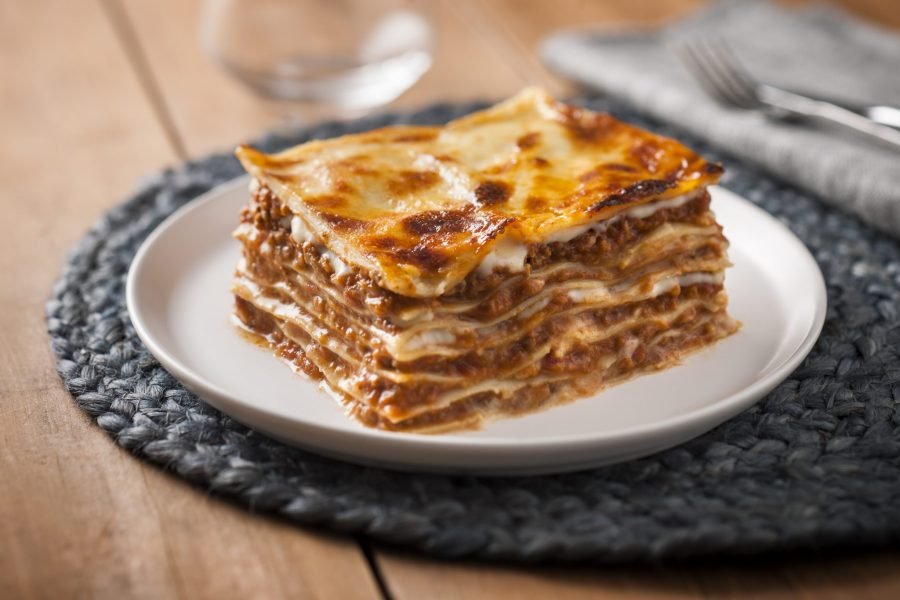Lasagne, a quintessential dish in Italian cuisine, is beloved around the world for its rich flavors, comforting texture, and the delightful layers that compose its heart and soul. The process of layering lasagne is akin to crafting a culinary masterpiece, where each layer contributes to the final taste symphony. This article aims to demystify the art of layering lasagne, guiding you through each step with precision and care, ensuring that your dish is nothing short of perfection.
Understanding the Basics of Lasagne
Before diving into the intricacies of layering, it’s essential to grasp what lasagne entails. At its core, lasagne consists of several key components: the pasta, the sauce(s), and the cheese. The traditional lasagne pasta is broad, flat, and ideally suited to holding the layers together. The sauces, often a rich tomato-based ragù and a creamy béchamel, provide moisture and flavor. Cheese, typically ricotta, mozzarella, and Parmesan, adds depth, richness, and a gooey texture that is irresistible.
Preparing Your Ingredients
The first step in crafting an exquisite lasagne is the preparation of your ingredients. Begin by cooking your lasagne noodles until they are al dente. This ensures they don’t become too soft during the baking process. Simultaneously, prepare your sauces. A well-seasoned, simmered ragù and a smooth, velvety béchamel are non-negotiable for a flavorful lasagne. If you’re incorporating vegetables or meats, cook these separately, ensuring they are well-seasoned and ready to layer.
The Foundation Layer
The base of your lasagne is crucial as it sets the stage for the rest of the dish. Start with a thin layer of béchamel sauce spread evenly over the bottom of your baking dish. This not only prevents the pasta from sticking but also ensures that your first layer of noodles has a moist foundation to soften into. On top of this béchamel layer, place your first layer of noodles, slightly overlapping them to prevent gaps.
Building the Layers
After laying down your pasta foundation, it’s time to start building the layers. Spread a layer of your ragù over the noodles, followed by dollops of ricotta cheese (if using), and a sprinkle of grated mozzarella and Parmesan. The ragù’s richness, combined with the creamy texture of the cheeses, creates a harmonious blend of flavors.
Next, add another layer of pasta sheets, pressing down gently to compact the layers slightly. Repeat the process of adding the sauces and cheeses, ensuring each layer is evenly spread and the ingredients are distributed uniformly. This repetition is the heart of the lasagne, where the magic of layering truly comes to life.
The Final Touches
As you approach the top of your dish, it’s important to finish with a flourish. The final layer should consist of pasta sheets topped with a generous spread of béchamel sauce, ensuring the noodles are completely covered. This top layer of béchamel helps to create a golden, bubbling crust when baked. A final sprinkle of grated Parmesan cheese adds a crispy, flavorful topping that is visually appealing and delicious.
Baking to Perfection
With your lasagne meticulously layered, it’s time to bake. Cover your dish with aluminum foil to prevent the top from burning and bake in a preheated oven. The baking process allows the flavors to meld together, the cheese to melt into a gooey delight, and the top layer to turn a golden brown. Halfway through, remove the foil to allow the top to crisp up.
Resting and Serving
One of the most crucial steps often overlooked in the lasagne-making process is the resting time post-baking. Allowing your lasagne to rest for a good 10-15 minutes before serving helps the layers set, making it easier to cut into neat slices. This rest period also gives the flavors a chance to settle and meld further, enhancing the overall taste experience.
Conclusion
Mastering the art of layering lasagne is a rewarding culinary endeavor that results in a dish that’s as pleasing to the eye as it is to the palate. By following these detailed steps and tips, you can ensure that your lasagne is not only delicious but also a testament to the care and attention you’ve invested in its creation. Remember, the beauty of lasagne lies in its layers, and each layer you add brings you one step closer to achieving a mouthwatering masterpiece that will delight family and friends alike. Whether for a special occasion or a comforting weekend meal, a well-layered lasagne is a celebration of flavors, textures, and the joy of cooking.
Frequently Asked Questions about Layering Lasagne
1. Do I need to cook the lasagne noodles before layering?
Yes, it’s generally recommended to cook the lasagne noodles until they are al dente before layering. This prevents them from becoming too mushy during the baking process. However, some no-boil lasagne noodles are designed to be used straight from the package and will cook in the oven.
2. Can I use different types of cheese in my lasagne?
Absolutely! While ricotta, mozzarella, and Parmesan are traditional, you can experiment with different cheeses to suit your taste. Consider using provolone for a sharper flavor or adding dollops of mascarpone for a creamier texture.
3. How many layers should a lasagne have?
A classic lasagne typically has three to four layers of noodles. The total number of layers will depend on the depth of your baking dish and the amount of filling. It’s important to ensure that each layer has enough sauce to prevent the lasagne from drying out.

















